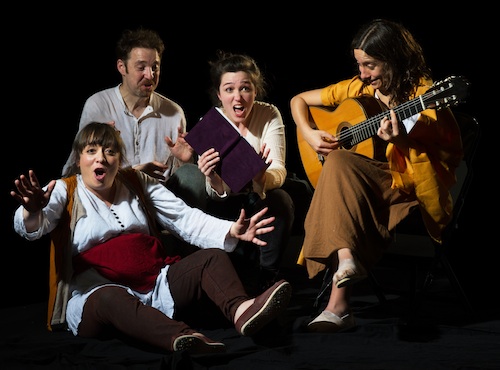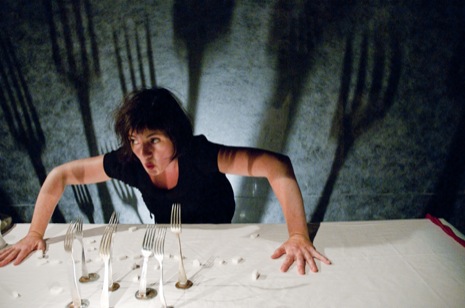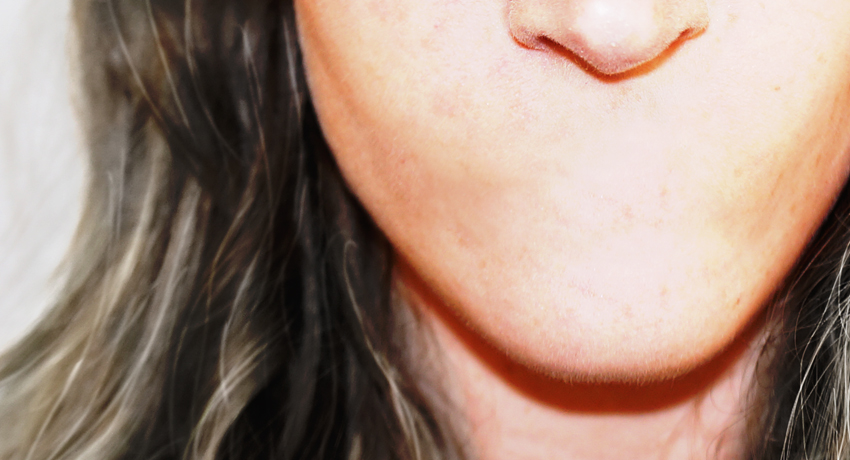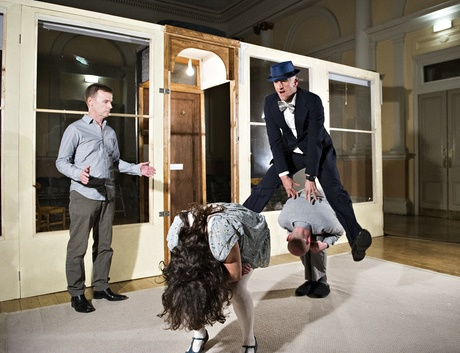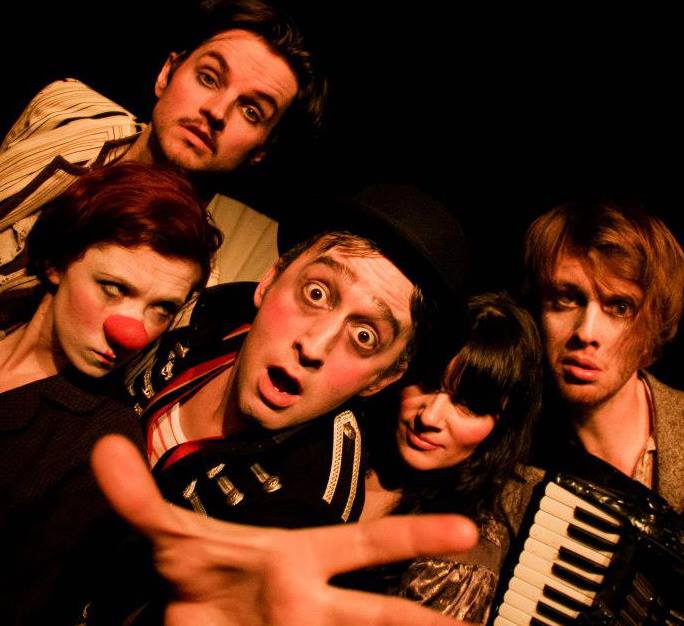Oh what a jolly jape is this! All our favourite Quixote moments are here, delivered with great gusto. Stephen Harper’s height grants a great advantage to a clown interpretation of the battle with the windmills; the lovely lady Dulcinea (who never appears in the original text) here appears flamenco-dancing on demand, every time her name is mentioned (unless she happens to be in character as someone else at the time, in which case a stage whisper ‘I can’t!’ adds comic resonance). The trusty stead Rocinante is brought to life by the three actors (aforementioned guest player Stephen Harper with company co-directors Merce Ribot and Patricia Rodriguez), all breathlessly switching from front or rear end of horse and rider depending on whose line it is, as Quixote and faithful side-kick Sancho Panza ride off on their adventures. All of this augmented and supported by the great musical talents of Spanish classical guitarist Maria Camahort, who (as is the way in clown shows) gets drawn into the action on many occasions.
As the company admit in their programme notes, taking on Don Quixote is a great challenge. Is it just madness? They are aiming for the moon, and won’t settle for less. Do they meet the challenge?
What they present is a refreshingly uplifting piece that is not only a paean to Cervantes classic text but also a kind of tribute to the physical theatre canon. I’ve no idea if the company are aware of, or have seen, any of the very many other physical theatre interpretations of this classic tale, but echoes are there regardless – in particular, to the classic physical theatre version by Gerry Flanagan’s Commotion Theatre – which, 20 years ago, was perhaps the definitive clown Quixote.
The staging is good: the company use a stage-within-the-stage, a built platform with little trapdoors, making for lots of exciting entrances and exits. There’s a Commedia cum Pantomime feel, with lots of running out into the audience, and little ironic asides and contemporary touches here and there. There are many references to being players making a play – again, this fits the traditions being honoured very well. I love the interplay between English and Spanish, especially the way that players not getting their way revert to ranting in Spanish. A crucial element of clown is exposure of the self – and each performer’s physical attributes, nationality and language all become fair game for the comedy. There are superb clown moments galore – the classic bucket of water filled with confetti is done with a lovely twist. And who can resist foolish faux-puppetry? The cushion sheep, especially…
It’s a not a boundary-breaking show. If you want a more radical interpretation of this text, try Tom Frankland’s Quijote (seen at the Edinburgh Fringe 2013). But if you like good solid clown and physical theatre skills used to great effect in the telling of a well-loved tale, this is the show for you. There are (inevitably) comparisons to be made to companies that have blazed the way for mime/physical theatre in the UK, including Commotion, Brouhaha, Told By An Idiot, and Spymonkey (and indeed Spymonkey’s Aitor Basauri is credited for R&D development). Yet they are making the form their own. And how wonderful it is to see young audiences coming along in droves to support and appreciate work of this sort. All power to the Little Soldiers – can’t wait to see what they dare to tackle next. I’m very glad they didn’t wait until they’d grown up to take on the giants and dragons of La Mancha.

